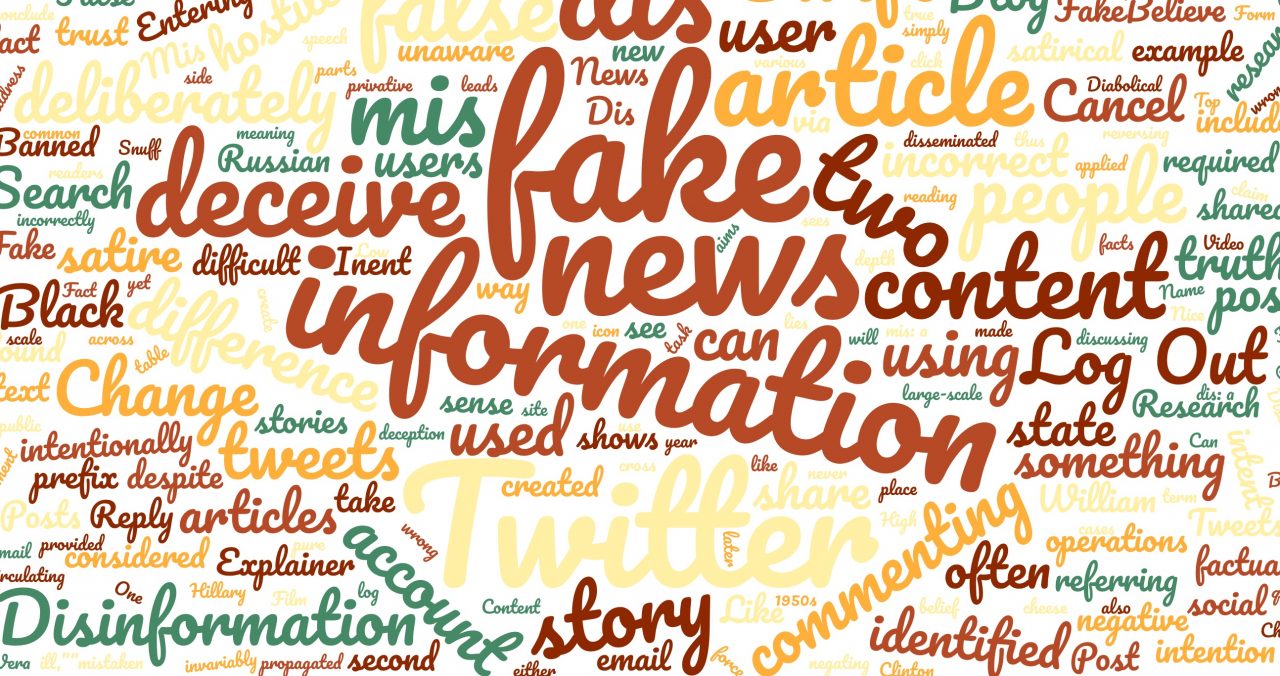The purpose of this page is to post original resources for educators, journalists and others to use to help educate people about disinformation, manipulation and deception online.
All the resources will be provided in multiple formats and can be re-used or re-produced without attribution. The purpose of this is to maintain FakeBelieve’s belief that disinformation resources should be accessible and free-to-access for all. Where it is possible, versions in multiple languages will also be added.
If you would like to request a particular resource, ask for a resource aimed at a certain age group or other demographic, or in a particular language, please get in contact with me through my Contact Form.
Resource 1 – Disinformation Versus Misinformation
This resource explains the difference between two key terms: disinformation and misinformation.

Focusing on key elements such as intention, this graphic explores the differences between the terms disinformation and misinformation. It ends by providing definitions for the verbs disinform and misinform to highlight their differences.
Files (presented as full graphics or section-by-section tiles)
Tiles: PDF1, PDF2, PDF3, PDF4, PDF5 ; IMAGE1, IMAGE2, IMAGE3, IMAGE4, IMAGE5
Audio Explainer:
Resource 2: Why Don’t We Use The Term “Fake News”?
Often when talking about disinformation, the term that occurs again and again is “fake news”. The phrase has a complex history and is often shunned by journalists, researchers and fact-checkers.

This graphic details six main discussion points surrounding the term “fake news”:
- Where it originated from
- Why some people avoid it
- Phrasing we should use instead
- A description of disinformation and misinformation
- Some context on the rise of “fake news”
- Words for disinformation and “fake news” in different languages
Often many people acknowledge that “fake news” as a term should be avoided, but may not know why. This graphic aims to clarify the main reasoning behind this, and offer alternatives for people to use.
Files
Full: Image (PNG) – PDF
Tiles: PDF1, PDF2, PDF3, PDF4, PDF5, PDF6, PDF7; IMAGE1, IMAGE2, IMAGE3, IMAGE4, IMAGE5, IMAGE6, IMAGE7
Audio Explainer:
Resource 3: Why Does Disinformation Exist?
While many people know what disinformation is, it is also important to understand why it exists and it can exist for many different reasons.

This graphic explains three motivations for the production of disinformation: for-profit disinformation; political disinformation; and ideological disinformation.
These types are not mutually exclusive and often there is overlap between them. The purpose of this graphic is to explain why this intentionally false content exists to begin with.
Files
Full: Image (PNG) – PDF
Tiles: PDF1, PDF2, PDF3, PDF4; IMAGE1, IMAGE2, IMAGE3, IMAGE4
Audio Explainer:
Resource 4: Why Do People Share Misinformation?
This graphic looks at some of the reasons why people share false content online. Understanding people’s motivations for spreading false information (sometimes unknowingly) can provide insights into how to educate people to stop the spread of misinformation in the future.

Looking at different reasons such as emotional reactions, malicious sharing, and crisis situations, this infographic explores why people share misinformation.
It is also important to remember that these reasons are not mutually exclusive and that there is overlap between them, and they often interact with each other. Misinformation is a complex issue and a very rarely can a single reason account for its spread.
Files
Full: Image (PNG); PDF
Tiles: PDF1 PDF2 PDF3 PDF4 PDF5 PDF6 PDF7; IMAGE1, IMAGE2, IMAGE3, IMAGE4, IMAGE5, IMAGE6, IMAGE7
